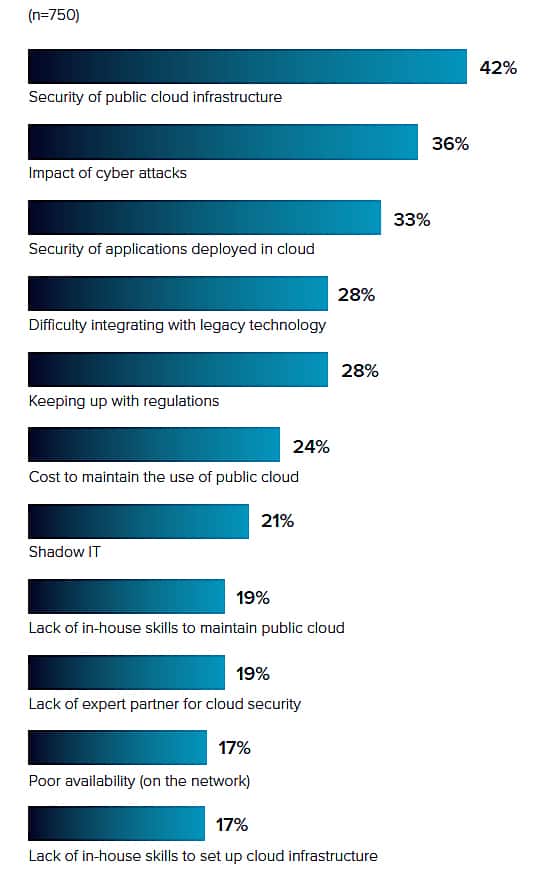The debate at both C-suite and at the operational level these days is not whether public cloud is on the agenda. It is when these firms will migrate to the public cloud, and perhaps just as important what form the cloud strategy will take – private, public, hybrid, or multi-cloud.
According to the Barracuda-commissioned report, Future shock: the cloud is the new network, IT infrastructure that sits in the public cloud will move from 45% today to 76% in the next five years.

The global survey conducted by Vanson Bourne noted that on average, 45% of respondents’ IT infrastructure resides in the public cloud.
The question is not ‘if’ but ‘when’
Organizations are moving infrastructure to public cloud, with SG firms ahead of their HK counterparts (40% vs. 31%). But both markets are behind the Asia-Pacific (APAC) average of 46%. The tables may yet turn for the two most often pitted rivals in five years’ time when HK firms are set to have 76% of their IT running on the cloud compared to 70% for SG firms.
“As more IT infrastructure moves to public cloud, cloud providers will offer more native network capabilities, and public cloud will expand to include more network functionality,” said James Forbes-May, vice president, Asia Pacific & Japan, Barracuda Networks said.
What’s the hold up?
Not surprisingly the biggest argument against cloud migration remains security, with 70% of respondents acknowledging security concerns is what restricts the pace at which they migrate to the public cloud.
Notable however is the wide disparity between Singapore (SG) firms compared to their Hong Kong (HK) equivalent. Ninety-six per cent of SG respondents say security concerns are tempering their move to public cloud. In HK, the same issue was raised by 78% of survey respondents.
SG firms’ paranoia may, however, be rooted in solid ground. Up to 58% of respondents from the city-state reported being targeted by cyber-attacks in the past.
When it came to security concerns from Singapore IT leaders, security of public cloud infrastructure came in first place (46%), tied with the impact of cyber-attacks (46%), and security of public cloud apps (40%).
HK firms are in worst shape however with 86% saying that they have already been targeted by a cyber-attack – 11% point higher than overall respondents (75%). This suggests Hong Kong is more vulnerable to cyber-attack. Top three threats are exposure of corporate network to intrusion/attacks, ransomware and distributed denial-of-service (DDoS) attacks.
More excuses
For SG firms, other notable concerns when it comes to migrating to the cloud include cost of moving to the public cloud (42%), difficulty adhering to regulation and compliance (32%), and lack of inhouse skills to manage the adoption of public cloud (32%).
HK firms, on the other hand cite integrations/network is the No. 2 concern with public cloud adoption. Included here are integrating public cloud with legacy technologies, better integration with private cloud, and enhanced integration with on-premises infrastructure.
Compliance and regulation are major barriers in moving to public cloud with 28% of HK respondents finding keeping up with regulations, such as GDPR, PCI and HAPPA, a barrier to growing their public cloud usage.
The way to public cloud
Both SG and HK respondents agree that a Software Defined Wide Area Network (SD-WAN) fully integrated into public cloud is their solution of choice.
SG firms say a secure SD-WAN will help mitigate these challenges on their journey to the cloud. Apparently, 22% are already deploying SD-WAN, and another 46% either in the process of deploying or expecting to deploy SD-WAN within the next 12 months.
HK firms are not too far off with 23% of respondents saying they already deployed SD-WAN, and another 51% either in the process of deploying or expecting to deploy within the next 12 months. SD-WAN is being used by more than half of those who have added security to their public cloud.
“The vast majority of organizations need their security vendors to offer advanced security and cloud connectivity tightly integrated with the major cloud platforms,” Forbes-May concluded.





